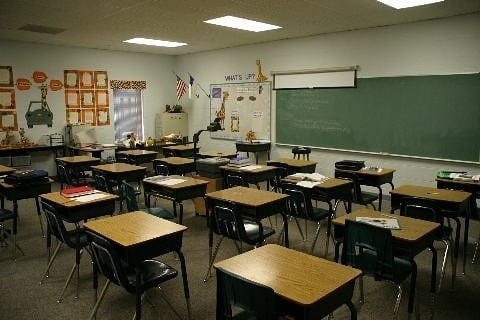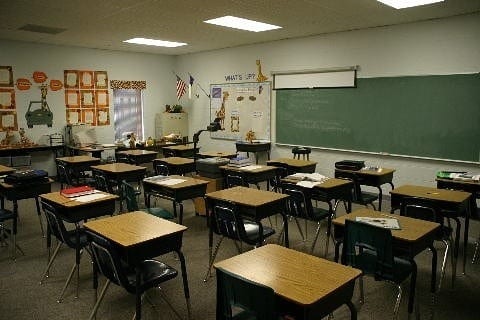
by Andrew Carey
LIMERICK has the highest rate of primary school absenteeism outside of Dublin.
Just over one in seven Limerick primary school pupils missed more than 20 days at school, according to latest statistics from the National Education Welfare Board (NEWB).
The figures relate to 2010 and 2011 and show that Limerick was just two percentage points behind Dublin for non-attendance in excess of 20 days at primary schools.
After a school notifies the NEWB that a child has missed over 20 days of school, a notice of attendance is issued and if there is an uncertified absence within seven days, parents or guardians could be fined or imprisoned for further breaches or non co-operation.
With levels of absenteeism running at 13 per cent, Limerick is two per cent worse than the national average of 11 percent for pupils missing from school for more than 20 days.
So far in 2013, a total of 31 prosecution under the 2000 Education Act have gone through the courts for both Limerick city and county.
NEWB figures for absences in post primary schools for the same period show that while Limerick figures are one of the highest in Munster, there has been a marked improvement with the rate of absenteeism in the city and county only marginally above the national average.
Longford has the worst figures for post primary absences where over one in four students miss in excess of 20 days at school.
The NEWB have credited the number of court prosecutions in Limerick as a deterrent for parents as absences come closer into line with the national average.
Limerick District Court Judge Eugene O’Kelly has stated that it is a “parent’s duty to ensure they get an education for their children”.
However, the NEWB report indicates that non-attendance is higher in disadvantaged schools with non-attendance at primary level generally higher in schools involved in the School Support Programme (SSP).
However, there is an important urban/rural dimension in non-attendance.
General non-attendance and twenty-day absences are higher in non-disadvantaged urban schools than they are in disadvantaged rural schools. According to the NEWB, this pattern is stable year-on-year.
Almost one-in-three second-level pupils at schools in disadvantaged areas are absent for at least 20 days in the year.
This figure is down one per cent from 2009/10 and just over three per cent from 2008/09. In non-disadvantaged schools the figure for 20-day absences was 14.6 per cent for 2010/11, down slightly on the previous year.
The figures published last week indicate that absenteeism of more than 20 days is more than twice the rate among students in non-disadvantaged schools – highlighting a perceived class divide in education.
The NEWB have said that school absenteeism rates are improving and are at their lowest for five years.
Each primary school year covers 183 teaching days, while at second-level it is 167 and nationally, 11 per cent of students have missed more than 20 days while the figure rises to just over 18 per cent for secondary school students.
Absenteeism among primary pupils is generally more of a problem in urban areas and in areas of disadvantage than in rural and non-disadvantaged schools.
It is also higher in special schools.
Expulsions in the last number of years are still rare, according to the report.
Only ten expulsions were reported in primary schools in 2009/10 and 16 in 2010/11. The corresponding figures at post-primary level were 148 and 136, accounting for less than 0.05 per cent of students.
In Limerick, there were no expulsions recorded in primary school while less than one per cent of the student population were suspended.
In secondary schools, just under five percent of students were suspended and less than 0.5 per cent were expelled.
Nationally this related to over 1,200 suspensions in primary school and 13,878 in the country’s 692 secondary schools.
Rates of non-attendance are higher in vocational and community /comprehensive schools than in voluntary secondary schools.
Minister for Children and Youth Affairs Frances Fitzgerald broadly welcomed the publication of the analysis of School Attendance Data which, she said, showed a marked improvement in student attendance from previously recorded year.
However she warned that the work to improve, regionally and nationally must continue as it was vital that the work to sustain improvement in school attendance must continue.
“This must be a truly collaborative effort between schools, statutory and support services and the home and must deliver an integrated approach to supporting student attendance but also effective participation in education and retention in the school system.
It is vital that we build an Irish evidence base for the work done by schools, statutory and other services to support children, young people and their families challenged by difficulties with school attendance, participation and retention. The findings of the NEWB research will be of great benefit to schools and to all who work in the area of children and their education”, she said.
Additional
DEIS -Delivering Equality of Opportunity in Schools (DEIS) the Action Plan for Educational Inclusion, was launched in May 2005 and is the Department of Education’s main policy instrument to address educational disadvantage. The action plan focuses on addressing and prioritising the educational needs of children and young people from disadvantaged communities, from pre-school through second-level education.
Excluding special schools, non-attendance in Irish primary schools was 5.3 per cent of student/days in 2010/11, compared to between 5.1 per cent and 6.7 per cent for Northern Ireland, England, Scotland and Wales. Non-attendance for Irish post-primary schools was 7.8 per cent of student days, compared to between 6.5 per cent and 8.8 per cent in neighbouring jurisdictions.


